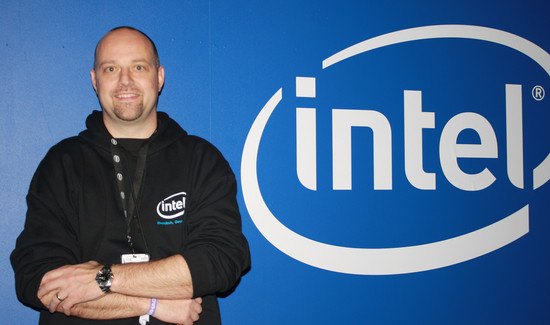Intel already has 14nm circuits up and running in the lab, this was revealed by Pat Bliemer, Managing Director Intel Northern Europe, in an interview with NordicHardware. Bliemer says that even though the manufacturing technology is becoming all the more complicated Intel is well in phase with current roadmaps.
Intel was the first semiconductor manufacturer to use 32 nanometer technology for mass production of microprocessors and next year by the end of the first quarter it will roll out the Ivy Bridge architecture with a brand new 22 nanometer process sporting so called 3D transistors, also known as Tri-gate transistors. During an interview with NordicHardware at DreamHack Winter 2011, Managing Director Intel Northern Europe, Pat Bliemer pointed out that with the launch of Ivy Bridge Intel will be one and a half node ahead of the competition. Something Bliemer says is anything but luck.
“I wouldn’t say that we have problem but there’s no denying that it’s getting more complicated the smaller you make something, so you’re running into limitations – but our R&D as well from an architectural point of view are the guys making the manufacturing and that’s within the same company – which makes Intel unique still. So we can really work extremely close with these teams. We are the same team, the guys who are going to manufacture the parts and the ones who will be designing the parts.”
 Pat Bleimer under DreamHack Winter 2011
Pat Bleimer under DreamHack Winter 2011
Intel has not just set the fresh 22 nanometer process ready for production, it has already taken the next generation manufacturing process from the drawing board to the test lab, and we have it confirmed that Intel already has the technology to build circuits at 14nm, and are running tests on these in the lab. This raises confidence since other semiconductor manufacturers have great problems with getting below 20 nanometer.
“We need to keep going and you can trust me that in our labs we actually have the next generation after 22nm running, so we need to keep going.[…]I cannot really disclose more about that other than that in a laboratory-environment, absolutely we do have the path, our engineers do have the path to actually go and produce 14nm products.”
Pat Bliemer could also confirm that Intel’s Tick-Tock strategy are going as planned and that it is not the shrinking of the manufacturing process that is moving Intel forward, but also the introduction of new solutions in the transistor design. Intel’s Tri-gate transistors will be introduced with the 22nm process and offer great advantages, but also something that will come to full use in the next generation 14 nanometer process.
 A 2D (planar) transistor compared to a 3D (tri-gate) transistor
A 2D (planar) transistor compared to a 3D (tri-gate) transistor
“There are many variables that you can play with of course it is not the right name for it and the engineers would not like it when I say play, that you can influence to actually go and stay to that model. And I think the breakthrough we had now with the 3D metal gates, just the design of the gate will actually allow for much more efficient thermals and power.”
We will be publishing more parts of the long interview with Pat Bliemer during the coming days, so keep an eye out for more interesting information, among others we discuss Intel’s bigger focus on the mobile market and the competition with AMD and ARM.















